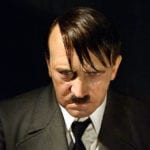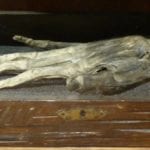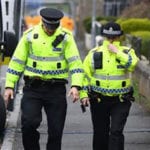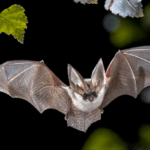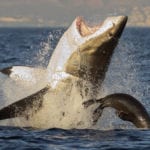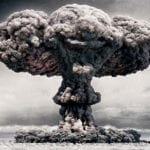 Our World
Our World  Our World
Our World  Pop Culture
Pop Culture 10 Incredible Female Comic Book Artists
 Crime
Crime 10 Terrifying Serial Killers from Centuries Ago
 Technology
Technology 10 Hilariously Over-Engineered Solutions to Simple Problems
 Miscellaneous
Miscellaneous 10 Ironic News Stories Straight out of an Alanis Morissette Song
 Politics
Politics 10 Lesser-Known Far-Right Groups of the 21st Century
 History
History Ten Revealing Facts about Daily Domestic Life in the Old West
 Weird Stuff
Weird Stuff 10 Everyday Products Surprisingly Made by Inmates
 Movies and TV
Movies and TV 10 Actors Dragged out of Retirement for One Key Role
 Creepy
Creepy 10 Lesser-Known Shapeshifter Legends from Around the World
 Our World
Our World 10 Science Facts That Will Change How You Look at the World
 Pop Culture
Pop Culture 10 Incredible Female Comic Book Artists
 Crime
Crime 10 Terrifying Serial Killers from Centuries Ago
Who's Behind Listverse?

Jamie Frater
Head Editor
Jamie founded Listverse due to an insatiable desire to share fascinating, obscure, and bizarre facts. He has been a guest speaker on numerous national radio and television stations and is a five time published author.
More About Us Technology
Technology 10 Hilariously Over-Engineered Solutions to Simple Problems
 Miscellaneous
Miscellaneous 10 Ironic News Stories Straight out of an Alanis Morissette Song
 Politics
Politics 10 Lesser-Known Far-Right Groups of the 21st Century
 History
History Ten Revealing Facts about Daily Domestic Life in the Old West
 Weird Stuff
Weird Stuff 10 Everyday Products Surprisingly Made by Inmates
 Movies and TV
Movies and TV 10 Actors Dragged out of Retirement for One Key Role
 Creepy
Creepy 10 Lesser-Known Shapeshifter Legends from Around the World
10 Flying Aces From Second-Tier World Powers
A fighter ace is a pilot who gains five kills against enemy pilots. The most well-known and popular aces tend to come from major world powers like Germany or the United States. But smaller countries have their fair share of heroic pilots that fought for what they believed in, too. The lesser-known aces on this list are from countries that are not considered major world powers.
10 Mato Dukovac
Croatia
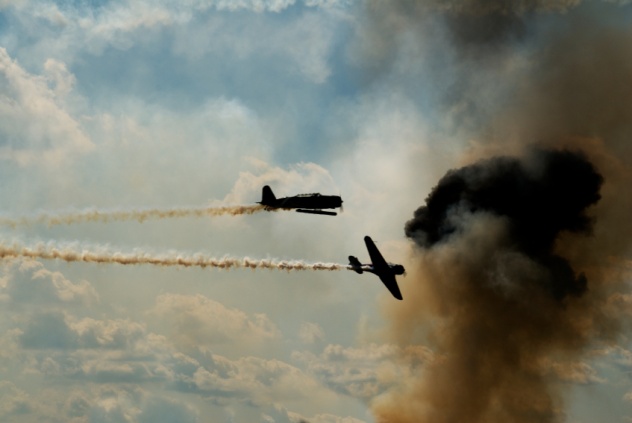
When Croatia became an independent country in 1941, its government organized an air army that would help the Nazis invade the Soviet Union. Mato Dukovac was among the first batch of Croatian pilots trained by the Germans. They headed off to the Eastern Front as soon as their training was over. On Dukovac’s 12th mission, he shot down a Soviet I-16 fighter plane. However, a few days later, his squadron left combat on a transfer back to Croatia.
Soon, the Germans needed more pilots to fight the Soviets and transferred Dukovac’s squadron back to the front. With more combat time, Dukovac quickly built up an impressive tally of kills against Soviet pilots. After a second and third tour of duty, he became a squadron leader. By 1944, German logistics were failing, and Dokovac’s squadron transferred to the front again but wasn’t supplied with airplanes. Infuriated, he defected to the Soviet Union, where Soviet commanders assigned him to train Yugoslavian pilots. Dukovac became increasingly frustrated in his new position and defected again in a stolen airplane. He made it to Italy and spent the rest of the war in a refugee camp.
After the war, Dukovac developed strong opinions against the newly formed state of Israel and volunteered to fly with the Arabs in the Arab-Israel War in 1948. He flew bombing missions in an old T-6 Texan. Later in his life, Dukovac immigrated to Canada and became a businessperson, dying in 1990. His wartime total was 44 kills, making him the highest-scoring Croatian ace of World War II.
9 Andres Garcia La Calle
Spain
The Spanish Civil War gave various nations a chance to test their war-making ability before World War II broke out. Both sides of the war had air forces, and the Spanish Republican forces mostly flew outdated airplanes at the beginning, before they received more advanced Soviet aircraft. During the early phases of the war, Andres Garcia La Calle was one of the top fighter pilots, scoring his early kills in outdated biplane fighters.
In 1936, La Calle was given command of a fighter squadron of 25 planes. His squadron was unique in that it included a section of US mercenary pilots who had joined the Republic to fight the fascists. La Calle was a highly effective squadron leader. He was well-known for not exposing his men to unnecessary risks, which made flying under his command a sought-after experience.
Given his squadron’s heroic performance during the Battle of Jarama, La Calle was given command of all fighter units in the Spanish Republic and went to the Soviet Union for further training. Although he was an effective leader, the nationalist air force outnumbered La Calle’s, and he didn’t have enough experienced pilots to be as effective. After the Republic fell, La Calle was exiled to France and then Mexico, where he lived out his days. He made 11 confirmed kills during his war service.
8 Leonard Allan Payne
Swaziland
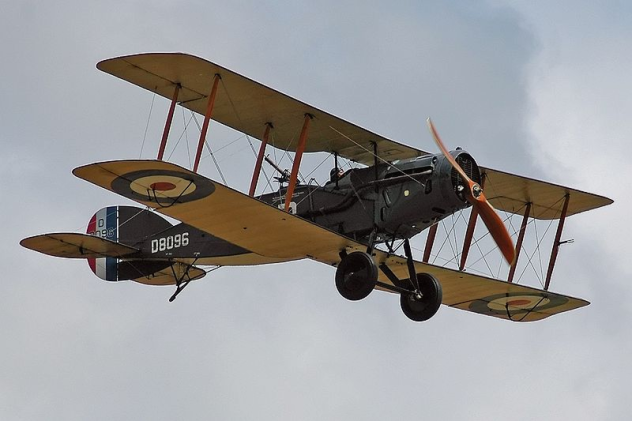
Leonard Allan Payne was a descendant of British colonists in Swaziland. In 1917, he enlisted in the Royal Air Force in his native country and went off to fight on the Western Front in World War I. Payne flew a Bristol F.2 Fighter, a two-seat recon aircraft that was nonetheless a very capable fighter plane. Although he got off to a slow start, Payne became one of the best F.2 pilots in the Royal Air Force, eventually scoring 11 kills in his machine.
Payne received the Military Cross for an extremely daring sortie at the end of the war. Given the task of conducting a recon mission, Payne flew only 60 meters (200 ft) above the ground, 14 kilometers (9 mi) behind enemy lines. While doing his recon mission, he shot down three enemy fighters, attacked enemy troops, and returned back to base with his F.2 riddled with bullets. Unfortunately, Payne lost his life in a flying accident in 1919. He is Swaziland’s top-scoring ace of all time.
7 Alexander De Seversky
Georgia
Alexander de Seversky was born in Georgia when it was still a part of the Russian Empire. His father taught him to fly. When World War I broke out, de Seversky joined the Navy, and after a short time in the service, he began training as a naval aviator. On his first mission, de Seversky attacked a German destroyer but was shot down by anti-aircraft fire. The crash injured his leg. Doctors amputated de Seversky’s leg in the hospital. Within a year, he was back on the front line.
De Seversky became a talented fighter pilot, claiming 13 kills during the war, making him one of the top pilots serving in Russia and the best Russian naval aviator, all while flying with an artificial leg. After the war, de Seversky stayed in the aviation business and was a huge proponent of strategic air power. He immigrated to the United States and built a groundbreaking bomb site for the Air Force. With the money from the patent, de Seversky founded his own airplane manufacturing company.
In the build-up to World War II, his company designed the all-metal P-35 monoplane. Unfortunately for de Seversky, the board of directors voted him out of the company, which reorganized as Republic Aviation. Republic designed the P-47 Thunderbolt based on de Seversky’s P-35. During World War II, the P-47 was one of the most important Allied fighters. Despite being kicked out of his company, de Seversky remained outspoken about the benefits of strategic air power and was influential in the development of the United States Strategic Air Command.
6 Clive Brewster-Joske
Fiji
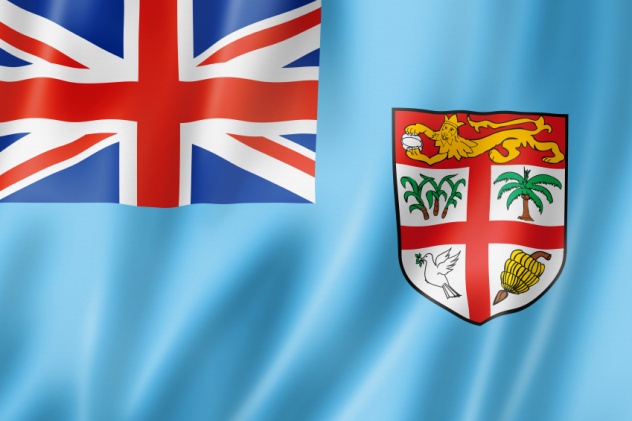
Clive Brewster-Joske was born in Fiji before World War I, when Fiji was still a British subject. His family was from Australia, but he spent his whole life in Fiji. He was in the military from the beginning of World War I. At first, he served in the infantry corps but eventually became a fighter pilot after spending some time as an observer gunner on recon planes. Once he was given a Sopwith Pup fighter, Brewster-Joske quickly scored six kills, boosting his total number to eight.
After the war, Brewster-Joske was one of the most important citizens of Fiji and spent time as a consultant to various world governments. He realized the importance of civil aviation, was very outspoken about the future of aviation, and believed that the government should work to improve the civil aviation industry. In the interwar period, he continued to serve in the military and spent World War II with the Australian Air Corps. Brewster-Joske was the best and most influential aviator from Fiji.
5 Constantin Cantacuzino
Romania
Cantacuzino was known as “the prince of aces,” being descended from a noble medieval Romanian family. From an early age, he loved airplanes and dreamed of being an aviator. After mastering ice hockey in his early years, he learned how to fly and was a natural in the cockpit. In 1939, he won the Romanian national aerobatics contest and became the chief pilot for the Romanian air transport company LARES.
When World War II broke out, Cantacuzino joined the air force and began to fly against the Soviet Union. As combat started, he quickly became one of Romania’s best pilots. One one mission, Cantacuzino and his wingman engaged 10 enemy fighters while protecting a flight of Romanian bombers. Early in the engagement, his wingman was hit and forced to return to base. In the ensuing fight, Cantacuzino single-handedly held off the fighters and managed to shoot down two of them. During the early days of the war, he flew unauthorized night missions against Soviet bombers, even though his Bf-109 fighter was not equipped for night sorties. This convinced German commanders that he was insane.
In 1944, Romania left the Axis, and Cantacuzino began to fly against the Luftwaffe. Allied commanders soon gave him a mission to transport a recently freed high-ranking American POW from Romania to Foggia, Italy. Cantacuzino took off in his Bf-109 with the POW, but when he landed in Foggia, his airplane could not be refueled, so he took a US Mustang fighter and flew it back to Romania, putting on a dazzling aerobatics show. Cantacuzino survived the war with 43 confirmed kills.
4 Marmaduke ‘Pat’ Pattle
South Africa
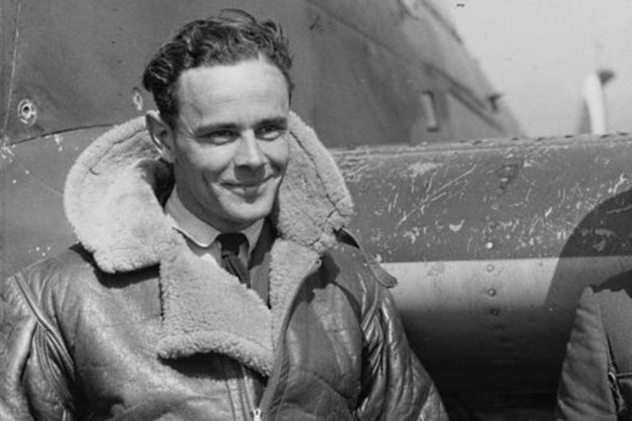
Marmaduke “Pat” Pattle joined the Royal Air Force in 1936, since at that time, South Africa was still a part of the British Commonwealth. After some training, Pattle served in Egypt, where he was when World War II broke out. He got his first taste of action in Libya against the Italians. His squadron flew the Gloster Gladiator biplane, an able aircraft that allowed Pattle to get his first few kills. When the Italian invasion was over, Pattle transferred to fight in Greece, where he became a squadron commander.
Pattle became a flight commander in 1940 and served in that position until his death. In Greece, he flew against the Luftwaffe, quickly gaining a huge amount of kills. Although he was a capable pilot, Pattle was not particularly liked by those under his command. He could be extremely abrasive and always forced his pilots to shave and wear proper clothing. Nonetheless, Pattle was an excellent pilot despite taking huge risks with an apparent disregard for his own safety.
On April 20, 1941 (Hitler’s birthday) Pattle scored six kills in early sorties. However, he was suffering from influenza and had a strong fever. He continued to fly against orders. During the third sortie of the day, Pattle’s flight engaged a group of German Bf-110 heavy fighters. Two German fighters latched onto Pattle’s tail, and his plane exploded under fire, crashing to the sea. At his time of death, Pattle had 50 confirmed kills, making him the highest-scoring British Commonwealth ace of the war. He is also the highest-scoring ace on the Gladiator and Hurricane fighters.
3 Spiro ‘Steve’ Pisanos
Greece
Born in Athens, Spiro “Steve” Pisanos loved airplanes from a young age. In 1938, he immigrated to the United States in hopes of one day becoming a pilot. When World War II broke out, he volunteered to fight with the Royal Air Force, since the US was not yet involved in the war. Despite still being a Greek citizen, Pisanos joined the American Number 71 Eagle Squadron and conducted low-level attack raids against Germany.
When the United States entered the war, the Air Force integrated Number 71. As a token of goodwill, the US granted citizenship to the six foreign nationals serving in the squadron, including Pisanos. He became a double ace with 10 kills after downing four airplanes on May 5, 1944. However, while flying back to base, his engine died due to bad spark plugs, and he realized that he would need to crash-land in occupied France.
As his plane got closer to the ground, Pisanos tried to bail out by climbing onto the wing, but parts of his harness caught on the cockpit. He got back in the cockpit and freed himself, but by the time he climbed back onto the wing, it was too late. The plane crashed into the ground, sending Pisanos flying. Luckily, he survived, but two German soldiers saw the crash and began to shoot at the downed pilot. Pisanos escaped and met up with French Resistance members, who sheltered him until the liberation of Paris. Major Pisanos stayed with the Air Force until he retired, by then flying supersonic jet fighters. He is still alive today, sharing his amazing story.
2 Karel Kuttelwascher
Czechoslovakia
In 1934, Karel Kuttelwascher became a fighter pilot with the Czechoslovak air force. When the country fell to the Germans, he escaped to Poland and then to France, when that country also fell to the Germans. In France, Kuttelwascher and other Czech pilots joined the French Foreign Legion to fight the Germans. As France fell, he escaped to England by sea and enlisted in the Royal Air Force.
In 1942, Kuttelwascher’s squadron was given a new type of mission called “night intrusion.” These were missions conducted by single aircraft to shoot down German bombers over their own airfield. Night intrusion missions were extremely dangerous, since they required excellent eyesight and navigation skills over enemy territory. Kuttelwascher flew a Hurricane fighter that didn’t even have radar. He quickly distinguished himself as an excellent night intrusion pilot, and his airplane became known as the “Night Reaper.”
His squadron received the new de Havilland Mosquito fighters later that year, but Kuttelwascher didn’t score any kills with the new airplane. He transferred away from the front in October 1942 and worked in a maintenance squadron for the rest of the war. Kuttelwascher ended the war with 18 kills, making him the best of the RAF night intrusion pilots, the best Czech fighter pilot, and the sixth-best British night fighter pilot, an amazing feat given that his airplane had no radar like the other night fighters did.
1 Ilmari Juutilainen
Finland
Most people don’t know about the Finnish fighter aces of the Continuation War between the Soviet Union and Finland, which started in 1941 and lasted until 1944. These pilots fought against the Soviets with outdated and under-armed fighter planes but were nonetheless the scourge of the Soviet air force. The best of them was Ilmari Juutilainen, Finland’s top-scoring fighter ace of all time.
Juutilainen scored his first few kills on the Fokker D.XXI during the earlier Winter War in 1939. During the Continuation War, Finnish fighter pilots mostly flew the Brewster Buffalo, an airplane universally rejected by every major air force as being a worthless fighter. Nonetheless, the Finnish pilots became experts on the portly fighter plane. As the war heated up, Juutilainen quickly built up an impressive kill sheet, often taking out multiple airplanes during a sortie, sometimes killing as many as six during a flight. Juutilainen was an expert tactician and didn’t take unnecessary risks. Once, he almost attacked a surfaced Soviet submarine but realized that he didn’t have the advantage and flew away.
Later in the war, Juutilainen’s squadron was given modern German Bf-109 fighters, with which he scored the most kills, but he is best known for his work with Buffalo. Throughout his career, Juutilainen refused to be commissioned as an officer, fearing that it would take him out of the cockpit. When the war ended, Juutilainen had 94 confirmed kills, even though he claimed that his total was 120. During his years of combat service, Juutilainen’s airplane was never hit once by enemy fire.
Zachery Brasier is a physics student who likes to write on the side. Check out his blog at zacherybrasier.com.
